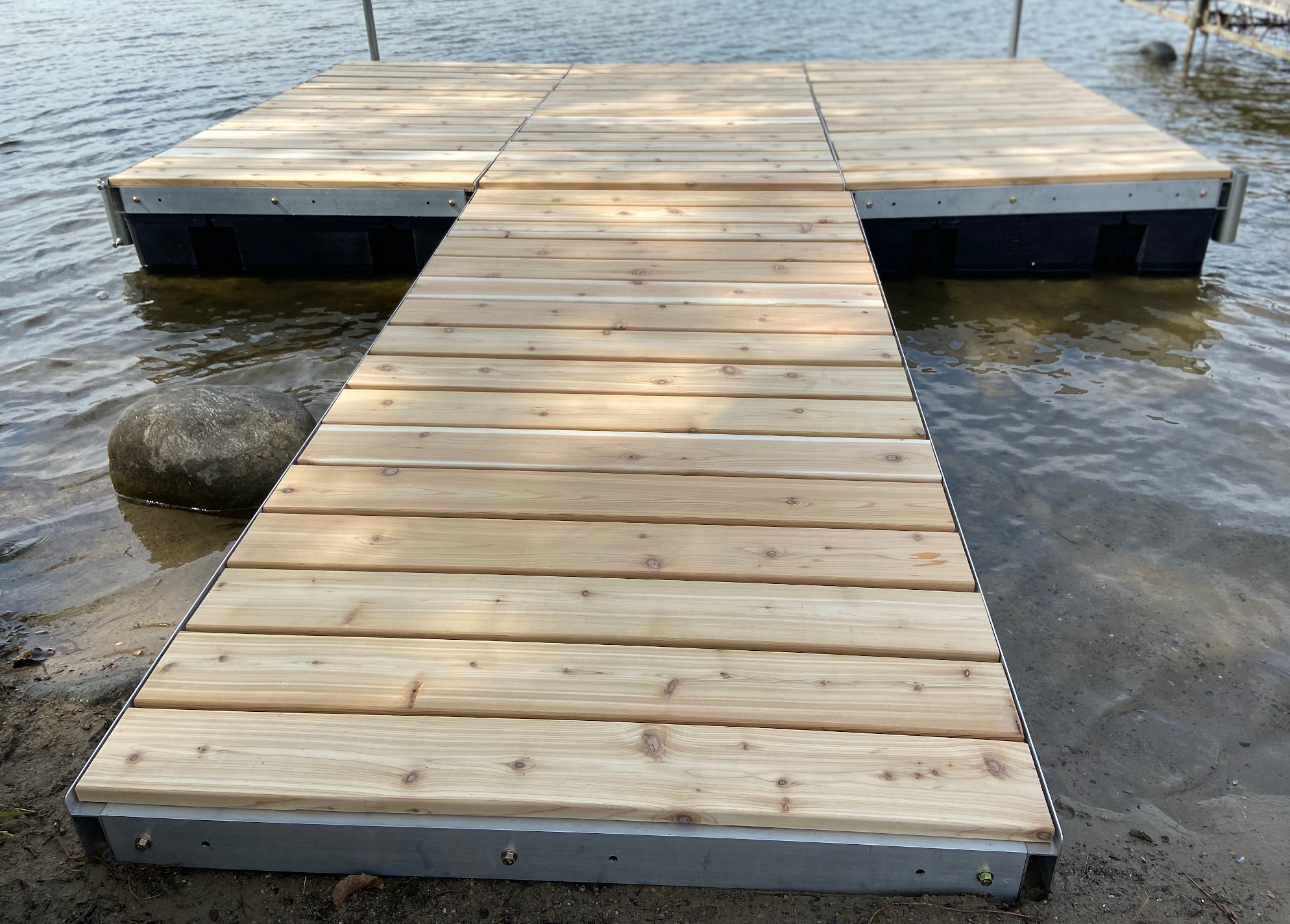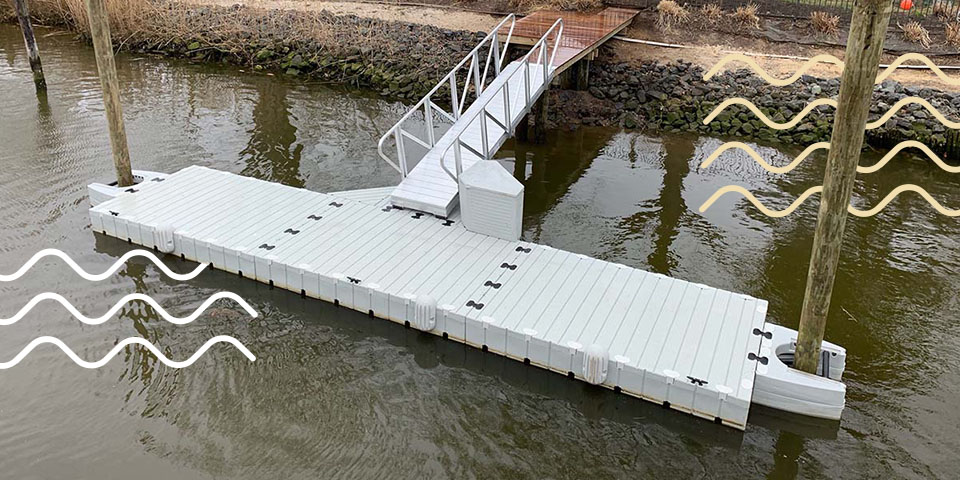Upgrade Your Beachfront With Durable Floating Docks
Upgrading your waterside with sturdy floating docks can dramatically enhance both performance and aesthetics, offering a functional remedy for various water activities. With an array of products readily available, including low-maintenance choices and typical timber, selecting the best dock can match your individual design and fulfill practical needs.
Benefits of Floating Docks
Floating docks deal a wide variety of advantages that enhance their allure for different maritime applications. Unlike traditional set docks, floating docks rise and autumn with the tide, ensuring constant ease of access for watercrafts and boat regardless of ecological conditions.
In addition, floating docks are less complicated to set up and relocate, giving adaptability for seasonal or momentary use. Their modular design permits for customization to fit details requirements, whether for exclusive marinas, property waterfronts, or business applications.
In addition, floating docks develop very little disruption to the aquatic atmosphere, maintaining local environments and reducing the probability of disintegration. They also supply boosted security and security for users, as their buoyant nature uses an extra forgiving surface than inflexible frameworks.
Moreover, floating docks can help with a varied series of activities, such as angling, swimming, and leisure boating, making them an important property for beachfront growth. Their versatility and functionality make floating docks a recommended selection for a selection of naval projects.
Choosing the Right Materials
Selecting suitable materials for floating docks is vital to their longevity, performance, and general efficiency. When selecting materials, think about elements such as environmental exposure, maintenance requirements, and structural honesty. Usual products consist of wood, plastic, aluminum, and composite choices, each offering distinct advantages and disadvantages.
Timber, while cosmetically pleasing, calls for normal upkeep to stop rot and degeneration. Pressure-treated wood can enhance sturdiness, however it may still catch water damages gradually. Plastic drifts, typically made from high-density polyethylene, are resistant to rust and call for marginal maintenance, making them an eye-catching choice for low-maintenance applications.
Light weight aluminum is an additional sensible alternative, understood for its stamina and lightweight buildings. It is immune to rust and can withstand rough climate problems, although it may be more pricey than various other materials. Compound products incorporate the finest features of timber and plastic, offering a resilient and low-maintenance option that imitates the appearance of timber without the associated downsides.
Eventually, the choice of product should straighten with the intended usage, environmental factors to consider, and budget restrictions, guaranteeing a useful and resilient floating dock that meets your certain needs.
Setup Refine Overview
The effective installation of a floating dock counts on careful planning and implementation, guaranteeing that it runs efficiently in its desired environment. The initial step involves examining website conditions, consisting of water depth, shoreline attributes, and prevailing weather condition patterns, which will certainly educate the dock design and anchoring system.
Complying with the website assessment, the next phase is to prepare the floating dock parts. This consists of setting up the structure, securing floats, more and connecting any kind of necessary hardware. It is essential to make sure that all connections are robust and water-resistant to stand up to aquatic problems.
Once the dock is put together, the setup procedure starts with positioning the dock in the water. This can involve a crane or other training devices, particularly for bigger frameworks. Correct alignment is important for functionality and security.

Upkeep Tips for Durability
Regular upkeep is important for making certain the durability and optimum performance of a drifting dock. To accomplish this, start with routine Check This Out inspections a minimum of twice a year, concentrating on the honesty of the dock's structure, consisting of the flotation tools and linking equipment. Search for indicators of rust, damages, or wear, and address any kind of issues without delay to avoid more wear and tear.
Cleaning up is another essential element of maintenance. Eliminate particles, algae, and barnacles from the dock's surface to avoid unsafe problems and preserve visual allure. Utilize a soft brush and a mild detergent to stay clear of damaging the dock's materials.
Additionally, make sure that the dock is effectively anchored and safeguarded to stand up to seasonal changes in water levels and weather condition problems. Examine the anchoring system for security and make changes as necessary.
Enhancing Your Outdoor Aesthetic
To create a visually appealing outdoor space, integrating a floating dock can substantially improve the general visual of your waterside residential or commercial property. Floating docks are not only functional but can also function as a striking prime focus that enhances the natural environments - floating dock services. Readily available in numerous products and styles, these docks can be customized to match your news home's architectural style and landscape
The addition of decorative components, such as incorporated lights or fashionable barriers, additionally raises the dock's visual allure. Take into consideration utilizing natural wood finishes, which blend flawlessly with the atmosphere, or choosing modern products like light weight aluminum or composite decking that offer a streamlined, modern look.
Strategically placing planters or seating locations on or around the dock can produce inviting spaces that urge leisure and enjoyment of waterfront sights. In addition, integrating colors and appearances that harmonize with your landscape will certainly develop a natural visual throughout your outside area.

Conclusion

Upgrading your waterside with durable floating docks can substantially improve both functionality and visual appeals, giving a flexible remedy for different water tasks. Unlike standard fixed docks, floating docks surge and autumn with the tide, making sure consistent availability for boats and boat regardless of environmental problems.Selecting suitable products for floating docks is essential to their durability, efficiency, and overall effectiveness.When the dock is assembled, the installation procedure begins with positioning the dock in the water.In summary, floating docks deal various benefits, including adaptability to water degree changes and a range of material choices.
Comments on “Your Overview to Locating the most effective Dock Company for Quality and Reliability”